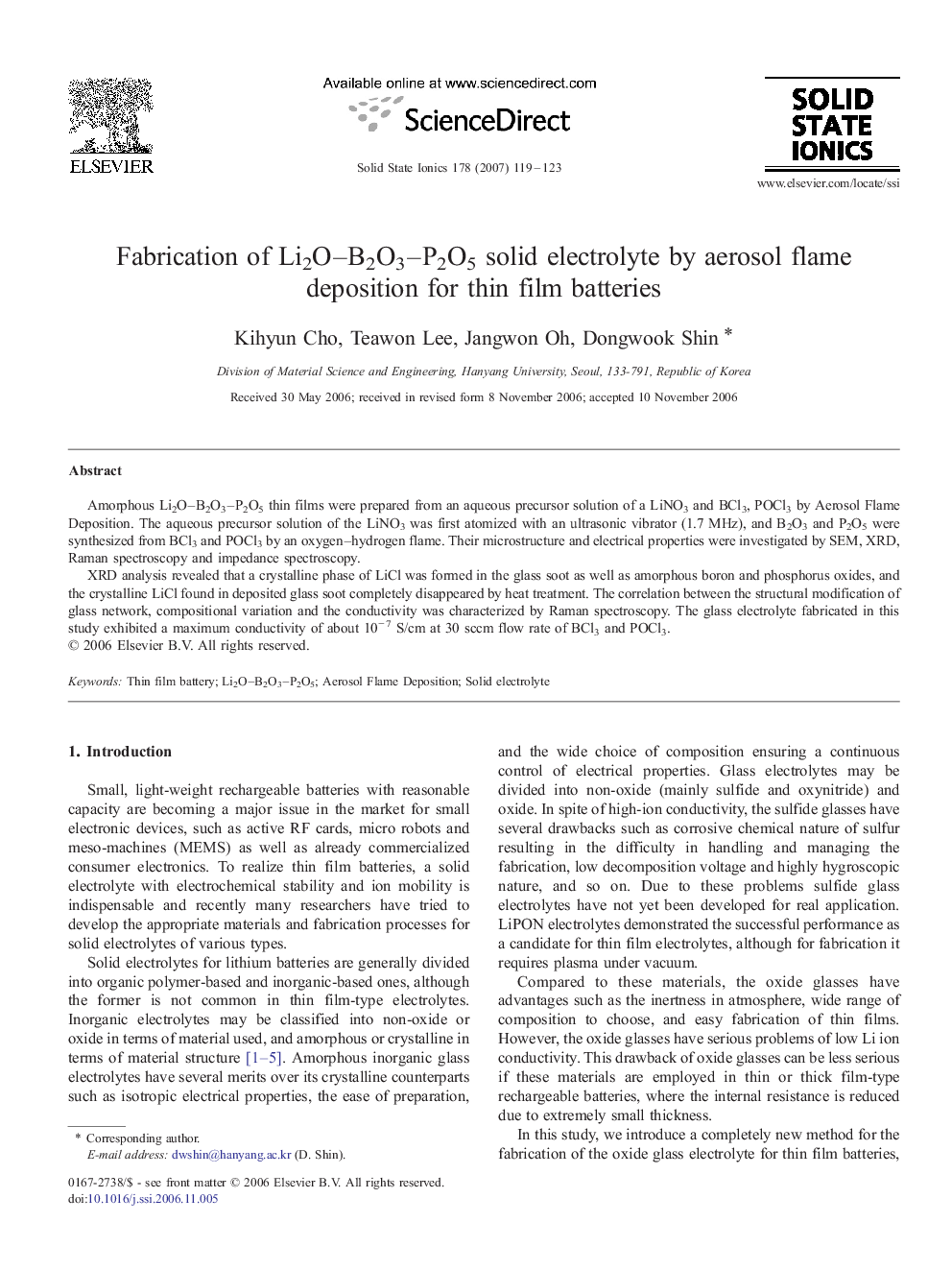| Article ID | Journal | Published Year | Pages | File Type |
|---|---|---|---|---|
| 1297385 | Solid State Ionics | 2007 | 5 Pages |
Abstract
XRD analysis revealed that a crystalline phase of LiCl was formed in the glass soot as well as amorphous boron and phosphorus oxides, and the crystalline LiCl found in deposited glass soot completely disappeared by heat treatment. The correlation between the structural modification of glass network, compositional variation and the conductivity was characterized by Raman spectroscopy. The glass electrolyte fabricated in this study exhibited a maximum conductivity of about 10â 7 S/cm at 30 sccm flow rate of BCl3 and POCl3.
Related Topics
Physical Sciences and Engineering
Chemistry
Electrochemistry
Authors
Kihyun Cho, Teawon Lee, Jangwon Oh, Dongwook Shin,
